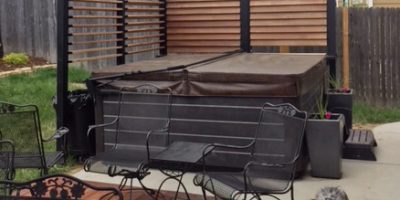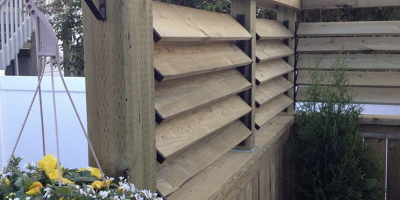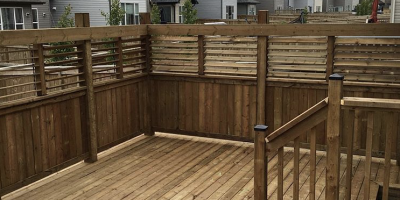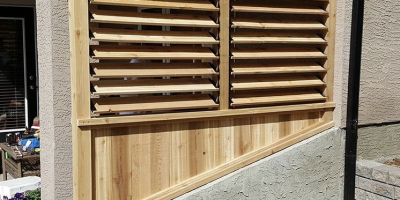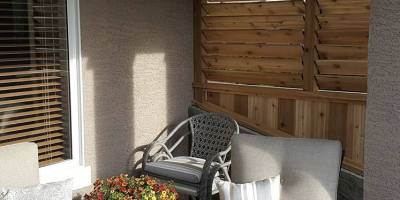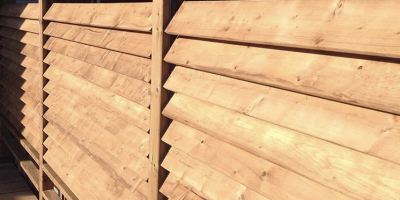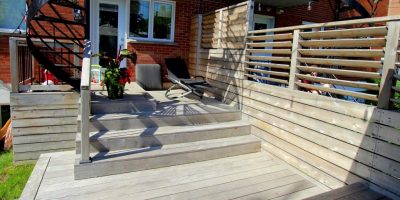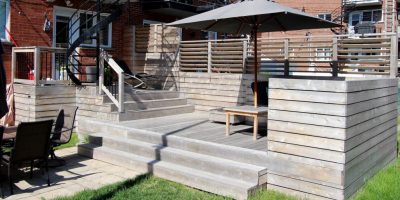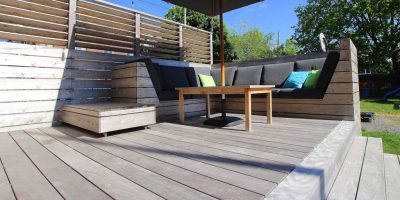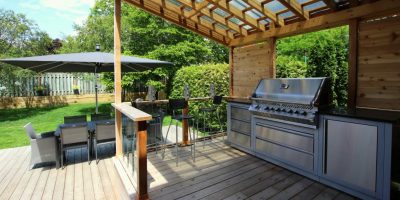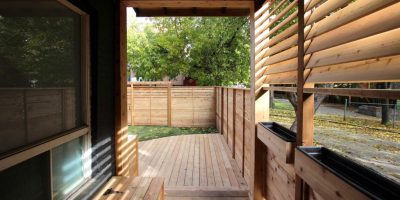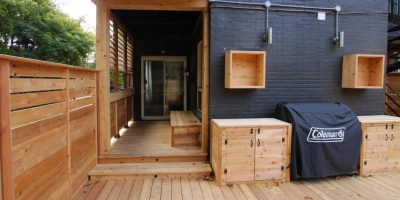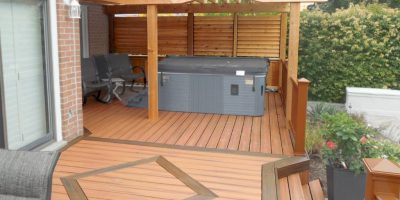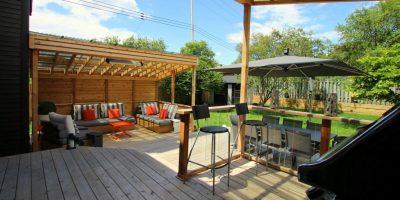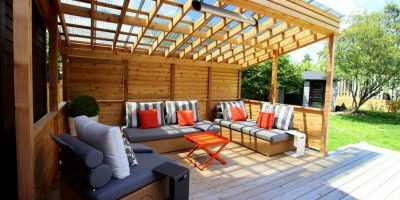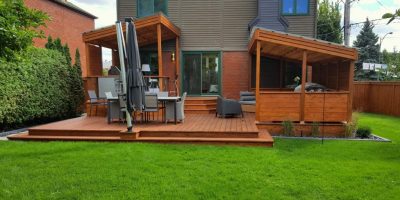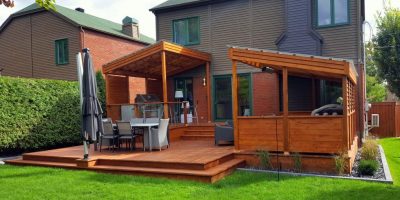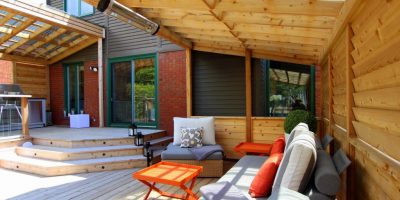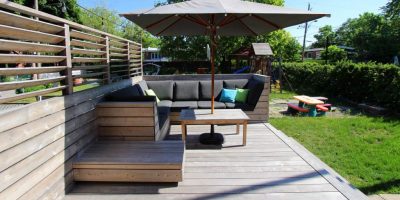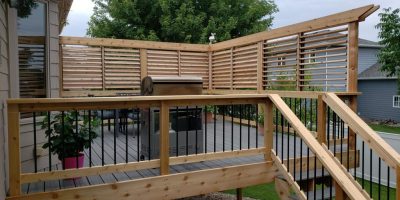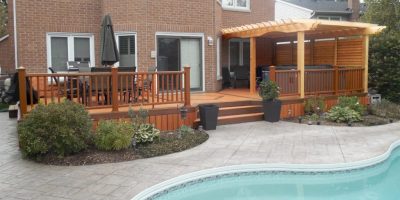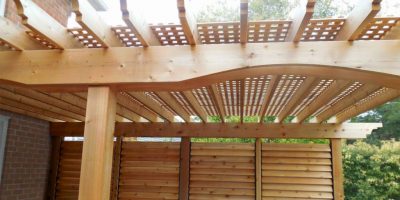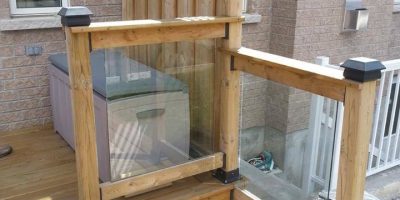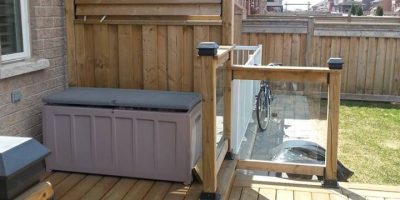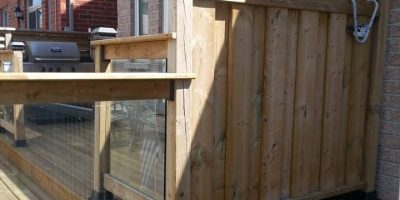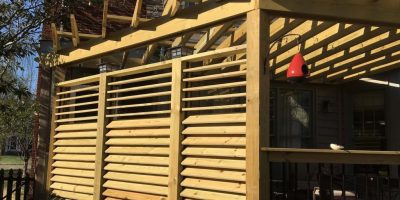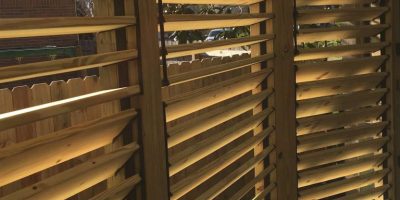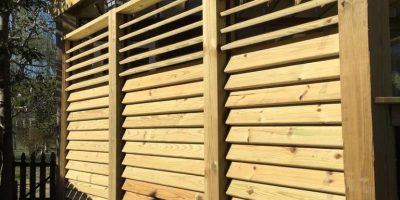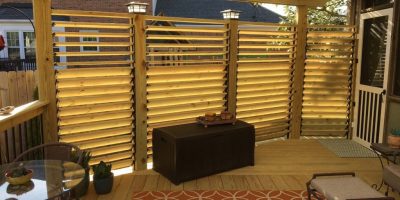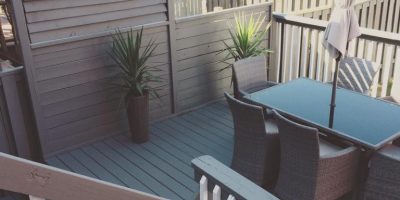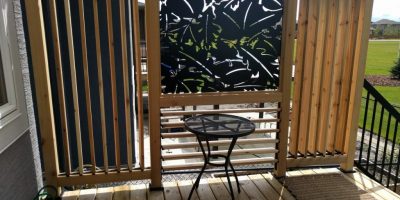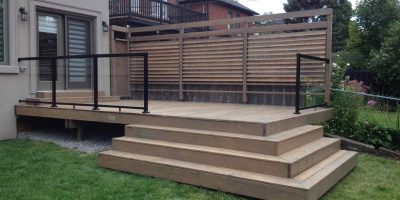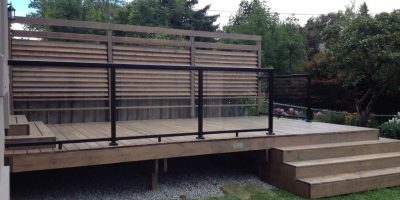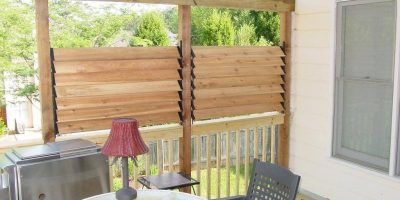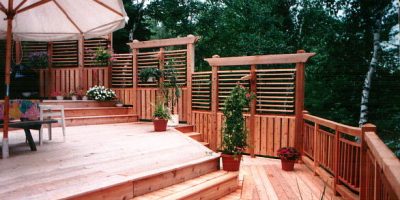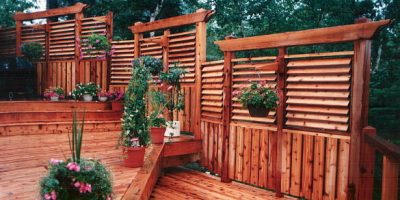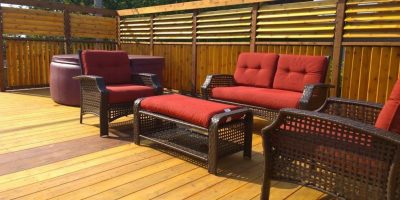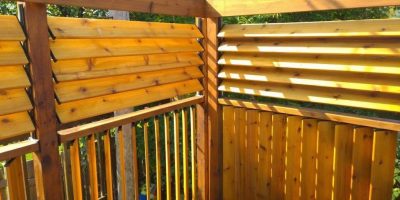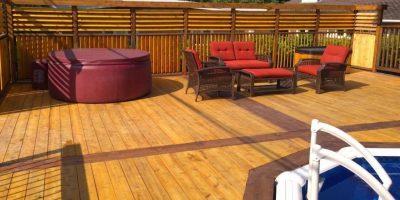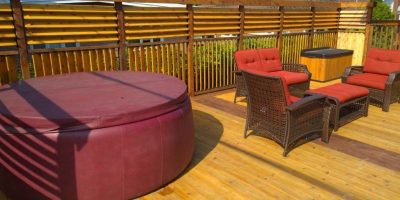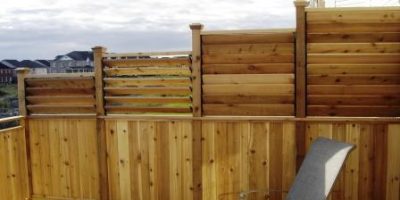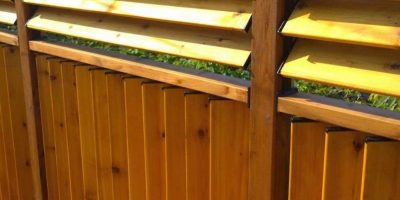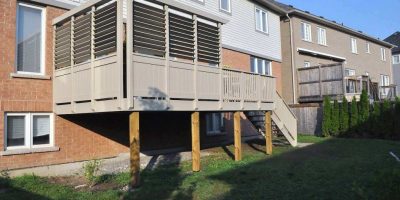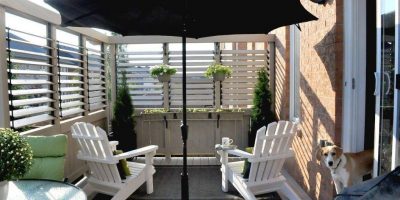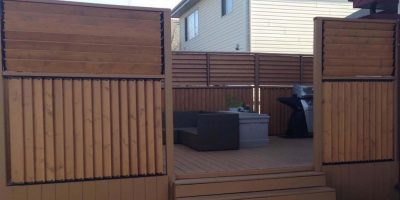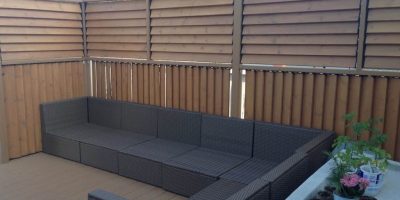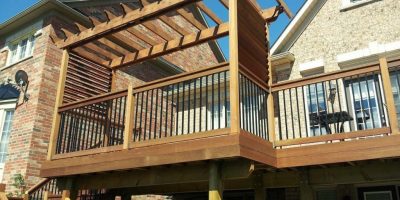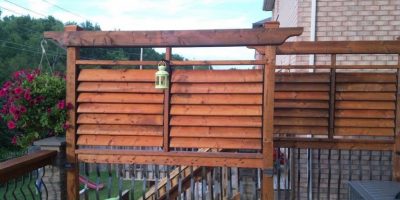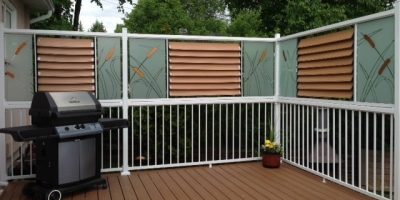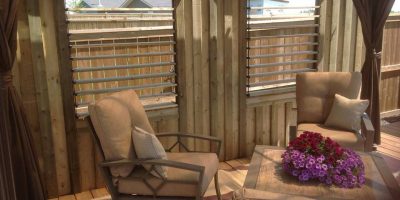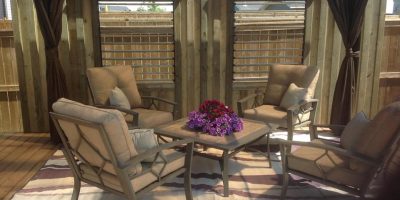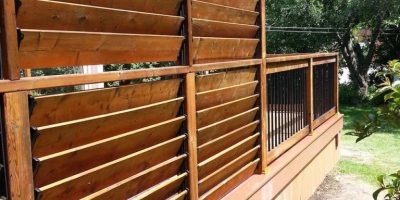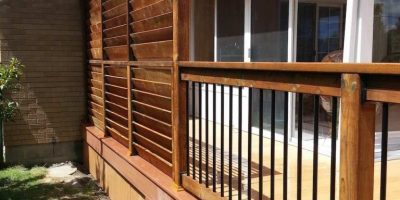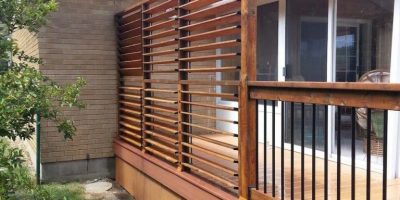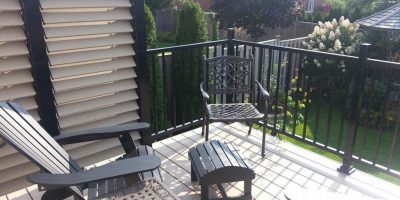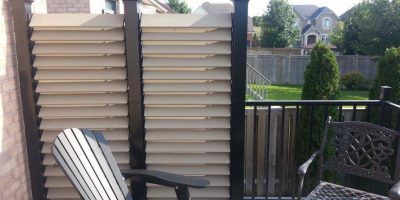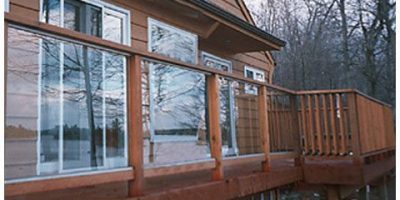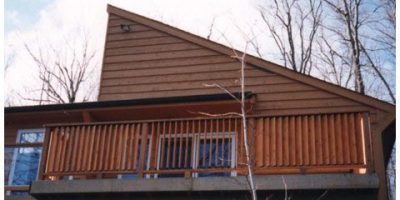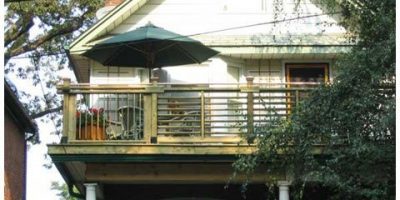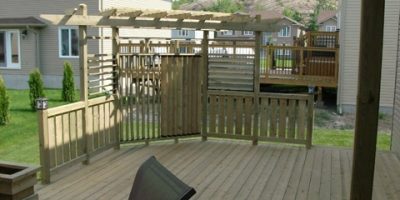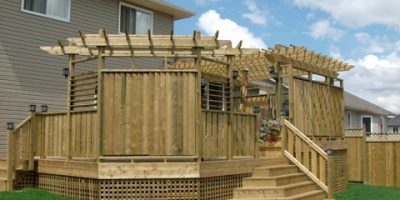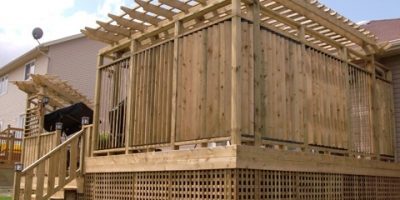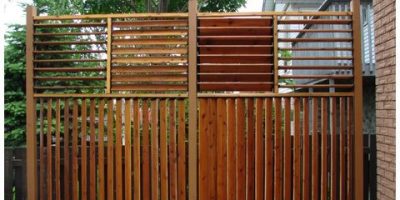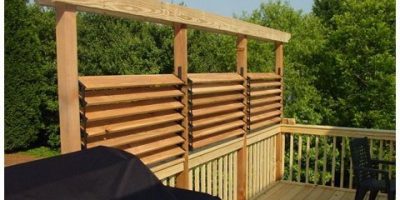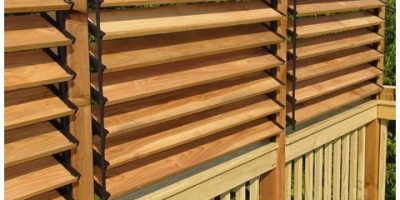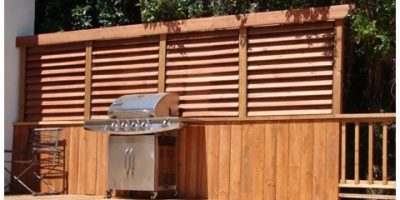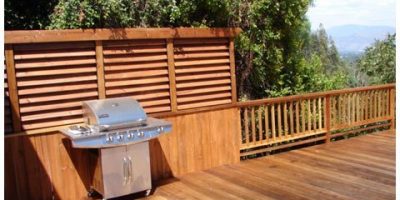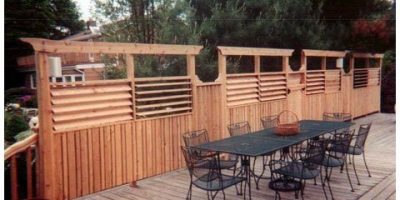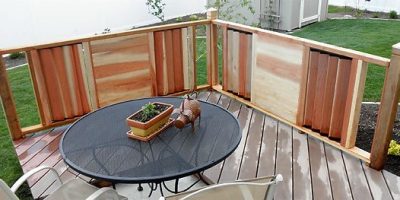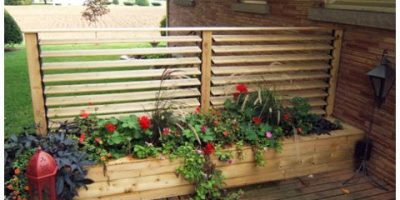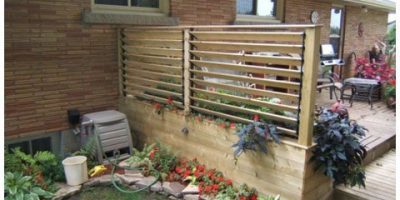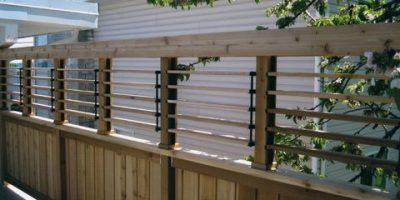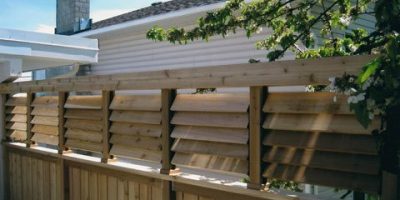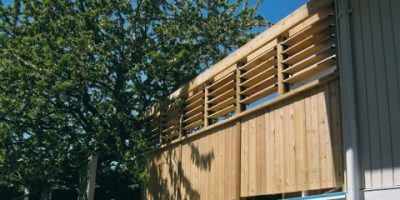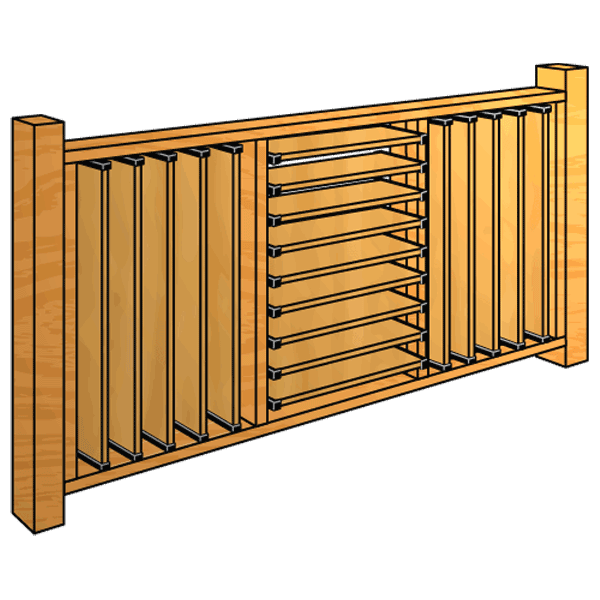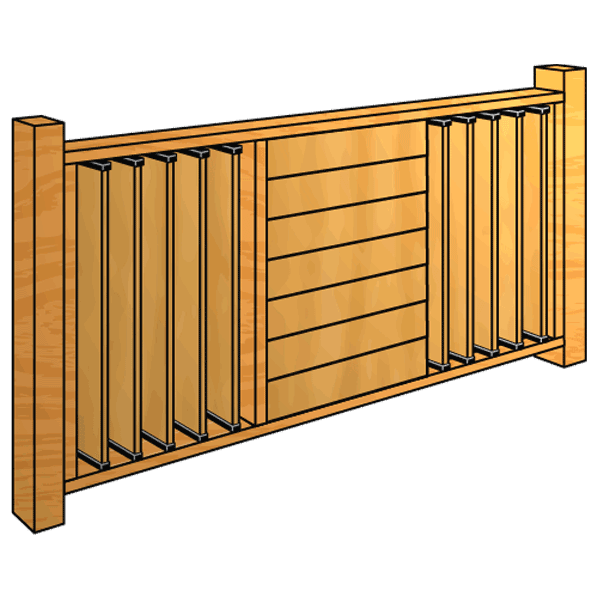Use a Privacy Deck Railing to Set the Mood
Close the louvers on the privacy screen for your deck railing, and watch as distracting views disappear and neighborhood noise begins to dampen. All that’s left for you to do is grab your favorite beverage, lean back on the comfiest outdoor couch you can find, and wind down from a hectic day.
Not ready to relax? Take the energy up a notch without creating problems for nearby residents by installing a deck railing with a privacy screen. Place an ice-filled cooler in the corner, fire up the grill and set the stage for a night of conversation and laughter with friends. Your privacy deck railing comes to the rescue again by creating a barrier that keeps the party out of sight and out of mind, and BBQ smoke on your side of the fence, not your neighbor’s.
Louver a Little or Alot
Hide a hot tub or shade a sliding door entrance with a louvered privacy deck railing that sits on top of an existing wrought iron or wooden deck fence, or that utilizes more than one of our FLEXfence Louver System hardware kits to block sightlines that can intrude on your privacy or reduce your security.
Get the same privacy with less of a fortressed look by keeping an area below the privacy screen for your deck railing open so cooling air can drift over your deck, or by keeping an area open above to save a sunset or forested view.
You can also soften the look of your privacy fence by placing potted trees or hanging plants in open “windows” within your design, alternating horizontal and vertical louvers, or gradually stepping up the height of your privacy deck railing versus setting it all at the same level.
Choosing Materials for Your Privacy Deck Railing Project
The wood you choose for your privacy deck railing project will depend on a variety of factors, including:
The materials already in place
If you’re adding to a deck or fence already there, it’s probably a good idea to stick with the same type of wood for your privacy railing to create continuity in terms of colour and grain.
The level of durability you want and the price you're willing to pay for it
Pressure Treated Wood
What's available at your local lumber yard
Where to Buy
FAQs About Privacy Deck Railings
Does constructing a privacy deck railing require a building permit?
To find out if your project will require a permit, it’s best to visit the Building Permit Department of your local City Hall or research the process on their website WELL IN ADVANCE of your anticipated project start date.
If you require a permit, you may need to do a property survey, collect and submit architectural plans, provide a tree inventory or more, plus pay the necessary fees. Once submitted, your permit application could take four to six weeks to be reviewed and approved.
If you decide to skip getting a required permit, you risk:
- A fine that’s often double the original permit fee
- Stoppage of all work while your new permit application is processed
- The possibility of having to disassemble and remove all work that was done prior to obtaining the new permit as part of the penalty for non-compliance
If you didn’t construct the deck, porch or balcony you want to add a privacy deck railing to, don’t assume the previous structure has a permit – or even if it did – that it’s up to date with current municipal zoning, bylaw and building code requirements.
Lastly, even if a permit isn’t required, ensure your contractor complies with all municipal zoning, bylaws and building codes.
When constructing a deck railing with a privacy screen, what is the max horizontal span for the slats?
What is the max vertical span for the slats?
How do I put together several 4' kits of FLEXfence so it looks like a continuous run on my privacy deck railing?
When mounting FLEXfence onto a post, does it matter whether we use 4" or 6" fence posts?
Can FLEXfence Louver System hardware kits be used with composite boards?
Can I paint various parts of the FLEXfence Louver System?
Has the FLEXfence Louver System been performance tested?
We select only the highest-grade materials and adhere to manufacturing best practices to ensure our FLEXfence Louver System hardware kits are strong and durable.

